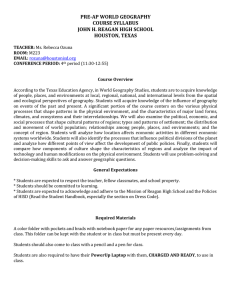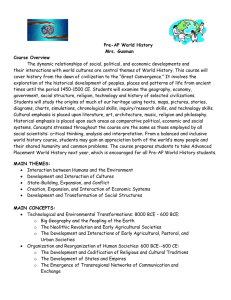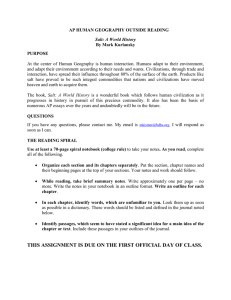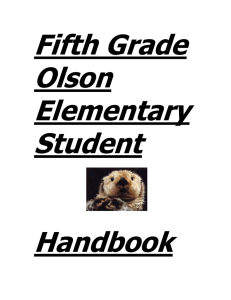WORLD HISTORY I/GEOGRAPHY SYLLABUS Mrs. Gusman Course Description:
advertisement
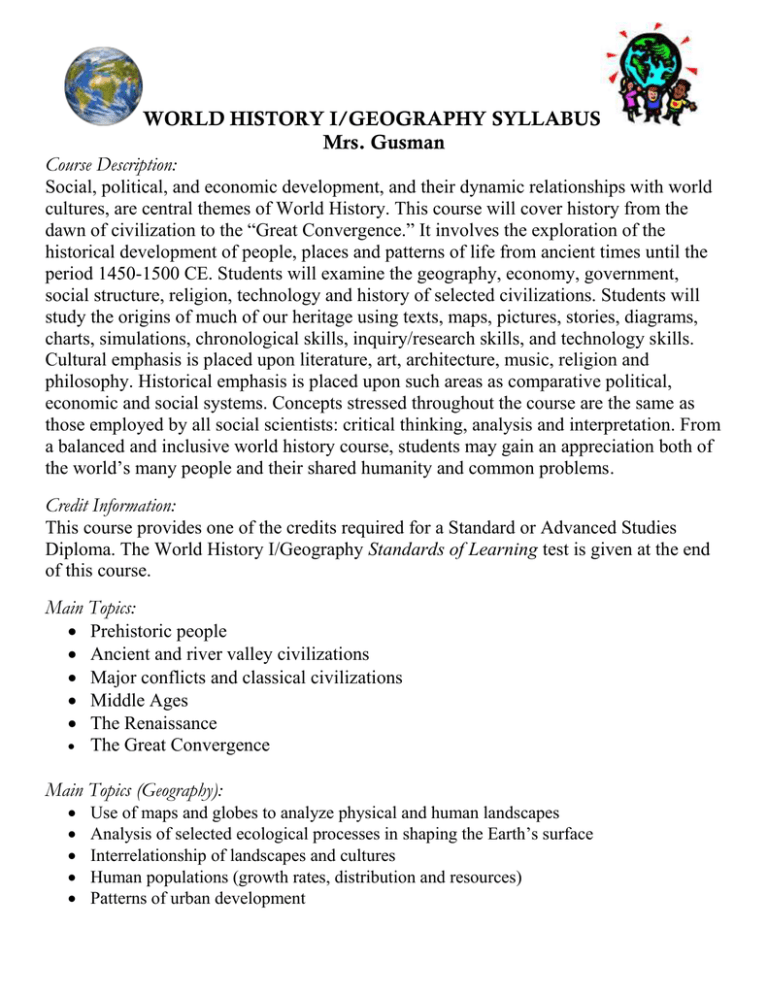
WORLD HISTORY I/GEOGRAPHY SYLLABUS Mrs. Gusman Course Description: Social, political, and economic development, and their dynamic relationships with world cultures, are central themes of World History. This course will cover history from the dawn of civilization to the “Great Convergence.” It involves the exploration of the historical development of people, places and patterns of life from ancient times until the period 1450-1500 CE. Students will examine the geography, economy, government, social structure, religion, technology and history of selected civilizations. Students will study the origins of much of our heritage using texts, maps, pictures, stories, diagrams, charts, simulations, chronological skills, inquiry/research skills, and technology skills. Cultural emphasis is placed upon literature, art, architecture, music, religion and philosophy. Historical emphasis is placed upon such areas as comparative political, economic and social systems. Concepts stressed throughout the course are the same as those employed by all social scientists: critical thinking, analysis and interpretation. From a balanced and inclusive world history course, students may gain an appreciation both of the world’s many people and their shared humanity and common problems. Credit Information: This course provides one of the credits required for a Standard or Advanced Studies Diploma. The World History I/Geography Standards of Learning test is given at the end of this course. Main Topics: Prehistoric people Ancient and river valley civilizations Major conflicts and classical civilizations Middle Ages The Renaissance The Great Convergence Main Topics (Geography): Use of maps and globes to analyze physical and human landscapes Analysis of selected ecological processes in shaping the Earth’s surface Interrelationship of landscapes and cultures Human populations (growth rates, distribution and resources) Patterns of urban development Academic Expectations 1. Attend school as learning and attendance are strongly related. 2. Be prepared for class with all necessary materials. 3. Missing work gets zero points. 4. Maintain a separate, organized notebook for each class. 5. Maintain personal and academic integrity. Using and passing off another’s work as your own or allowing your work to be copied constitutes plagiarism and results in an automatic zero and parental contact. 6. Follow procedures for make-up assignments. 7. Stay on task and do not disrupt the learning environment. 8. Be respectful and courteous to all people in the school building. Grades Tests ~35% Quizzes ~30% Class work ~10% Participation 15% Homework ~10% Make-up work 1. Assignments you knew about – Turn them in on the day of your return. 2. Assignments while you were absent – It is your RESPONSIBILITY to check with the teacher and collect make-up work. 3. Tests – On the day of your return you must arrange a make-up test date. Materials and notebook check Five subject spiral notebook with plastic cover (Mead is good) Small scissors for cutting paper Glue sticks Colored pencils Note card system Remember I am here to help you to succeed in school, so please let me know what I can do to help you. I am available before and after school and during Titan Time. Signatures Student___________________________Parent_____________________________
